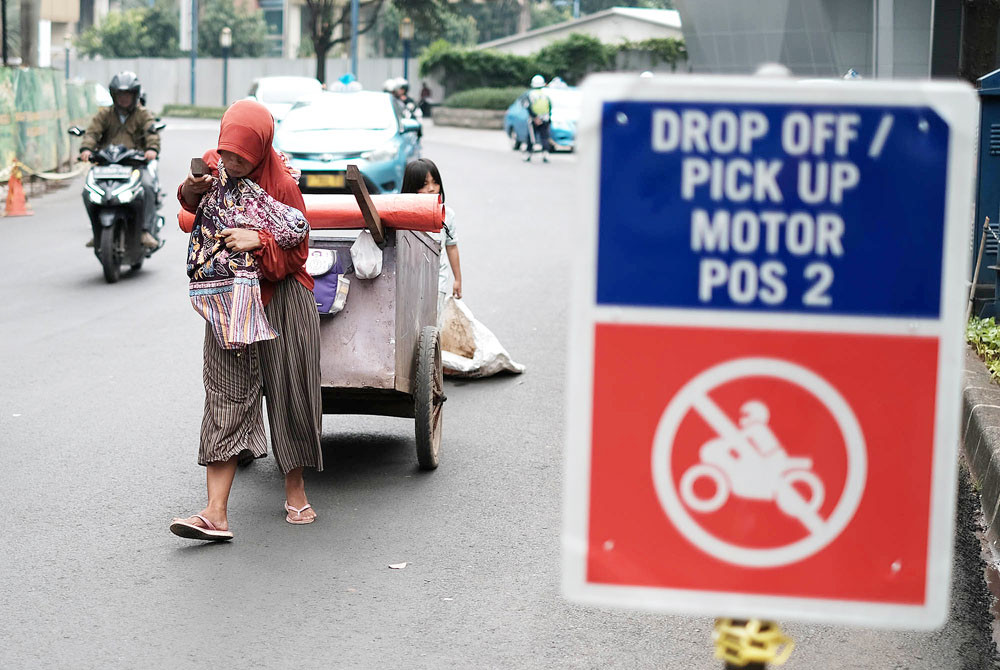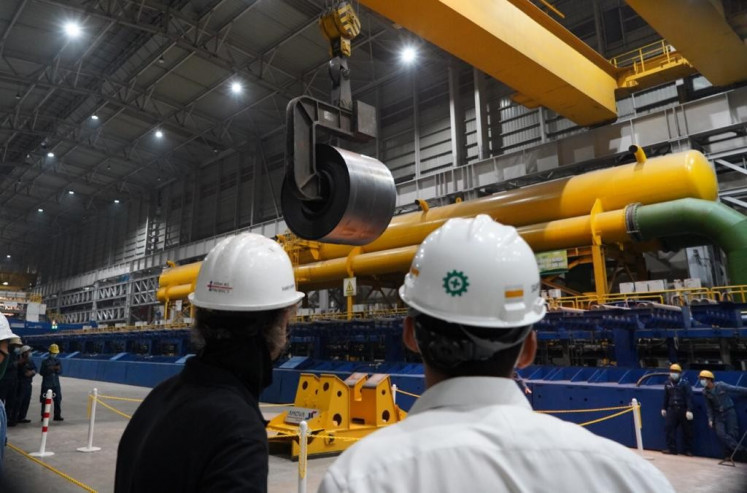Popular Reads
Top Results
Can't find what you're looking for?
View all search resultsPopular Reads
Top Results
Can't find what you're looking for?
View all search resultsTo keep plastics out of ocean we must shift to circular economy
In June 2017, the government launched the National Action Plan on Marine Debris with the ambitious target of reducing marine plastic debris by 70 percent — largely tied to 100 percent urban waste collection targets.
Change text size
Gift Premium Articles
to Anyone
W
e are drowning in plastic. Unless we change our behavior, there will be more plastic by weight than fish in the ocean by 2050. Solving this crisis requires us to do more than just banning plastic straws.
We need a paradigm shift. We must adopt deep structural changes to our plastic production and consumption patterns in order to move away from the extractive linear model of “take, make, use and dispose” toward a “closed-loop” circular economy — an economy that is intentionally restorative.
Over the past year, governments in Southeast Asia have been in the hot seat over plastic pollution. Indonesia, the Philippines, Thailand and Vietnam are some of the world’s top plastic polluters. Together with China, they account for up to 60 percent of the plastic waste leaking into our oceans.
An AVPN joint report with ECCA Family Trust — released recently — identified the main challenges as a lack of infrastructure and financing, poor public awareness, poor execution of recycling policies, illegal dumping, as well as unplanned industrial development.
The good news is that governments are stepping up their efforts to reduce plastic pollution. In Indonesia, the World Bank estimates that 20 percent of plastic waste — or some 0.48 to 1.29 million metric tons — ends up in rivers and coastal waters each year.
In June 2017, the government launched the National Action Plan on Marine Debris with the ambitious target of reducing marine plastic debris by 70 percent — largely tied to 100 percent urban waste collection targets.
To achieve this goal, the government has said that it will contribute US$1 billion annually. It has also teamed up with the Global Plastic Action Partnership to translate political commitments into investible action plans.
Consumer-goods companies have been struggling to rethink their plastic packaging but an investment fund in Singapore may drive change.
________
Indonesia, the Philippines, Thailand and Vietnam are some of the world’s top plastic polluters.
________
Last month, investment management firm Circulate Capital closed its debut Circulate Capital Ocean Fund with a total capital commitment of $106 million from PepsiCo, Danone, Unilever, and The Coca-Cola Company (among others).
The fund will make debt and equity investments across the entire plastic value chain — from alternative materials to waste management infrastructure to advanced recycling technology.
It seeks to demonstrate that investments in turning plastic from waste into a resource can provide attractive financial returns.
More and more closed-loop circular economy initiatives are emerging amongst local communities and entrepreneurs.
In Indonesia, for example, Plastic Energy — a company with a unique process to recycle plastic waste on a global and commercial scale — is building a plastic collection and research vessel. Concept One will be one of the first plastic waste-to-fuel powered vessels.
In addition to recovering plastics from the ocean, it will raise awareness about the impacts of plastics and provide medical services in remote regions.
Plastic Energy has also reached an agreement with the province of West Java to build five chemical recycling plants that will convert plastic waste into either oils for making new plastics or alternative fuel with lower emissions.
These examples represent solutions that, when scaled and connected to other efforts, could potentially move the needle on plastic waste.
These questions of scale and coordination are important ones that require networks to drive change.
Networks play an important role in the circular economy by removing barriers to scale and providing platforms and mechanisms that connect investors and capacity-builders with social enterprises and nonprofits that require both financial and nonfinancial resources.
I believe there are sizeable and valuable opportunities to create a circular economy within the plastics value chain in Southeast Asia. But at present efforts are too fragmented and uncoordinated to have impact scale.
The Ellen MacArthur Foundation estimates that 95 percent of the material value of plastic packaging — valued at between $80 billion and $120 billion annually — is lost to the global economy after a brief initial use.
If we — investors, businesses, governments, and consumers — can move the plastics industry into a positive spiral of value capture, we will do an enormous service to both our oceans and our economy.
A world in which plastic never becomes waste is not beyond the realms of possibility. But for it to become a reality, we need to work together.
***
Chairperson and CEO of AVPN










